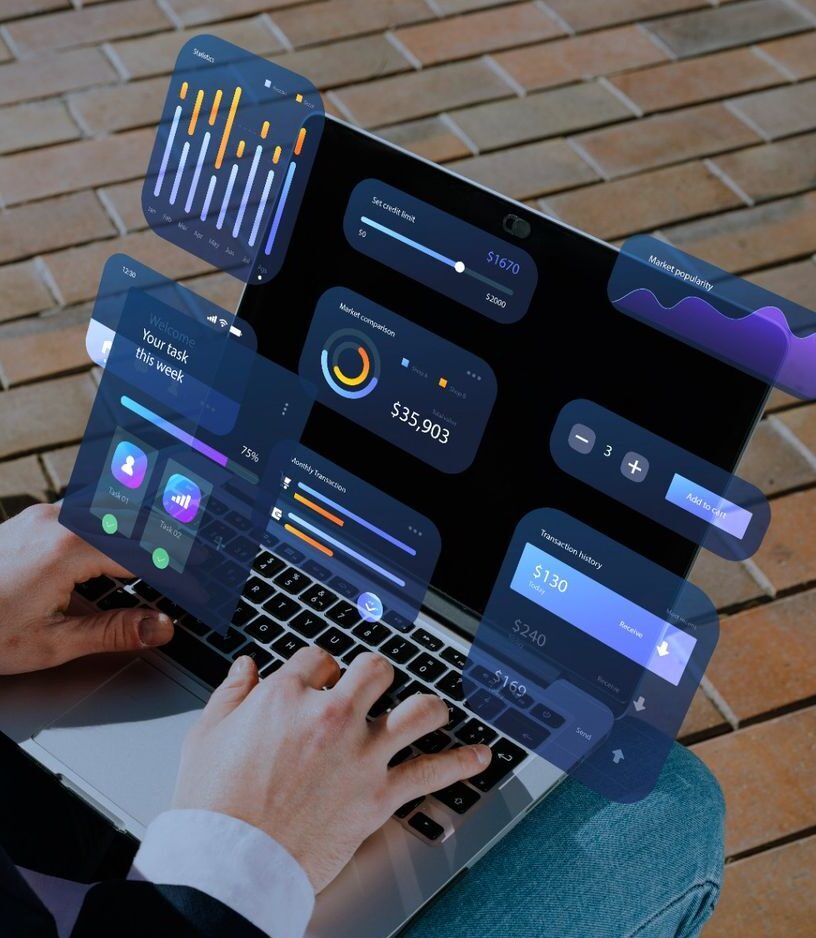If you ask Gen Z and Gen Alpha where they spend most of their time, it will be online. Digital engagement is imperative for the new generation. They cannot imagine living without the internet and a phone. With such an entrenched digital lifestyle, consumer behavior is vastly different. Think of the 4Ps of marketing: Product, Price, Place, and Promotion. Product, Price, and Promotion are evolving, but what about Place? Now, product availability can be everywhere, whenever you want to see it, and with 10-minute deliveries, it’s within your reach in most cities. Therefore, today’s consumers are quite different from those of a decade ago. The touchscreen life excellently represents the consumer’s desire. You want to touch it and grab it instantly. You cannot wait to get it. Impatience through digital devices is increasing, and so is digital marketing.
With these new traits, consumer differentiation vastly depends on digital marketing methods, cool UIs, video interactions, CGI and animation, and even VR and AR integration in daily life. Consumers are asking more questions online and getting answers from either a human companion miles away or automated AI responses learned from many human interactions.
So what’s new in the digital marketing space?
- SEO: Search engine optimization is changing. Remember Google’s AI Overviews, which provide a summary of your questions? It’s like searching for calculations or weather online and getting the summary without visiting weather.com or any other website. Consumers will visit your site less frequently as their questions are already answered in the summarized AI. Although controversial, this will evolve and become a regular practice affecting our SEO strategies.
- Voice Search: Search began with text queries where search engine algorithms found the best answers from query combinations. Then image search evolved. Now, voice understanding has improved significantly. With AI, voice search is more natural and akin to human interaction. Modern consumers rely on voice information provided by the web. If your product is voice-ready, it will be highly used by consumers, and if recommended through voice search, its credibility will be higher.
- Personalized Web: The web is now a personalized space. Remember the 4Ps? Place for two people on the web will be different according to their interests and personalities. If someone is more interested in sports, they will see products and information related to a healthy lifestyle, sports, and brands that resonate with their personality and daily routines. Modern consumer services must be highly personalized and create their niche, especially in the digital space.
- Influencer Marketing: The best advertising is Word of Mouth (WOM), where customers hear recommendations about products and services from trusted individuals. Influencers are these trusted individuals today. They are celebrities in their own realms, and influencer marketing will grow faster as it is a result-oriented marketing format. An influencer is a niche, and their personalized information reaches the right audience. Brands need to prepare for personalized marketing.
- Video Marketing: Five years ago, Instagram was primarily for image sharing, and videos had less share on the platform. Now, with reels, Instagram is highly used for videos, animated information, and musical images. With CGI and AI, video quality and expectations are growing very high. Brands must exploit this to optimize customer attention on the web.
- Localization: Ten years ago, globalization was significant with the surge of digital platforms and global dependencies. The evolving scenario tells us to rely on local products and services for better response and issue resolution. It may lead to creating a super brand in the region, impacting many lives. Your brand could be one of those.
- New Avenues: Digital marketing and advertising are no longer limited to Google, YouTube, and Meta networks but extend to quick commerce, local commerce, high-traffic publishers, and digital businesses. Think of the meme business evolving into a million-dollar property due to significant consumer traffic. Brands should utilize these avenues to see what can be done.
- Loyalty: Brand loyalty has changed. As mentioned, Gen Z and Alpha will try new platforms and aspects of life. They are not particularly loyal to one brand as products are available anytime, anywhere, at a cheaper price. Cost is not the only factor affecting modern consumers. They look for brand values, social media responses, brand-consumer connection, brand communication sync with the end user, and many other aspects like sensitivity to human values, the environment, and global affairs.
Digital marketing is evolving to the point that it will change how we speak to our consumers. There are many aspects not covered here, such as consumer offline and online interactions with products and services, consumer service, positive/negative online reviews, reviews of brand employees on their LinkedIn profiles, and many other aspects.
Get ready for this growth where things will be more specific and tailored to the consumer niche. A single brand cannot cater to all. At Contarctica, we regularly explore how to solve these future issues and work on new opportunities to help brands grow their business through digital, voice web, and events that cover the entire marketing life cycle of a consumer.



